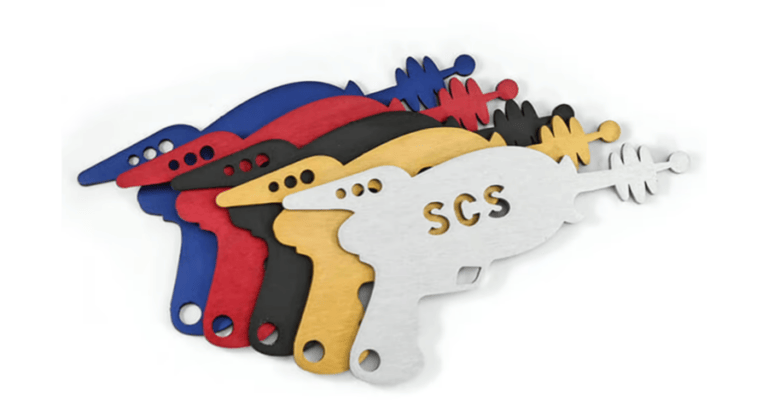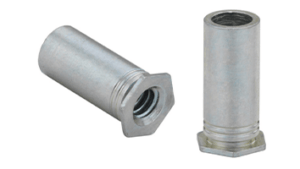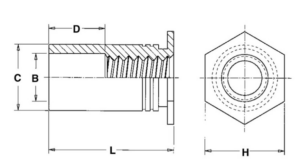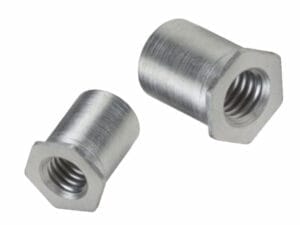A lot of people are using CNC laser cutting, but what you may not know is that there are lots of options after the part comes out of the machine. You can pick and choose which processes you want performed on your laser cut parts as long as it fits the respective services guidelines. To help you decide what add-ons are best for your project, we’ve broken down our service options below.
What is CNC laser cutting
CNC laser cutting is the process of using a computer to control a laser beam to cut through material. The computer controls the movement and intensity of the laser beam, which cuts through most materials with high accuracy. Materials that can be cut include: wood, plastic (including acrylic), and other soft materials; aluminum; steel; stainless steel; brass; copper sheet metal. You can see a full list of our 150+ materials on our materials page.
We offer three types of cutting options, CNC routing, fiber laser cutting, and waterjet cutting. After you submit your CAD file, we’ll determine the best cutting machine based on material, thickness, and design.
Benefits of laser cutting post-process operations
Most projects don’t end at laser cutting. We offer a variety of post-process operations that can help bring your projects to life and turn your parts into a complete product. Below we explore available add-on services for CNC laser cut parts.
CNC Bending and Forming
CNC sheet metal bending is an important post process operation that can be used to add extra functionality to your parts.
SendCutSend uses top-of-the-line CNC equipment and robotics to bend your laser cut parts to your specifications within one degree of accuracy or better. Our expertly trained staff ensures that every project is completed on time and with precision, giving you the best possible bends.
As long as your part has a maximum flat size of 30″x30″ and is no thicker than .250,” depending on flange length, we can bend it.
Be sure to check out our bending guidelines and additional bending resources before uploading your design.
Hole Operations
Hardware insertion
When it comes to hardware insertion, we’re pros. We use PEM fasteners—the industry standard for nuts, studs, and stand-offs—to simplify your design problems and improve the performance of your custom metal parts.
Hardware provides options when there is little to no access to the backside of a part after installation or in place of tapping in thin or soft materials.
Be sure to check out our hardware guidelines and additional hardware resources before uploading your design.
Tapping
Tapping is the process of cutting threads on a hole. The most common use for tapping is to install threaded fasteners, such as screws and nuts.
Tapping sheet metal requires understanding thread sizes and types for fasteners, choosing the correct hole size and the correct tap for your material thickness. Utilizing specialized, automated equipment and trained staff, we precisely laser cut a hole, create some threading, and send you on your way with your completed part.
SendCutSend’s tapping services can be applied to a variety of materials in several thickness levels. Choose from Aluminum, Copper, Brass, Stainless Steel, Mild Steel, Chromoly, Delrin or HDPE. Reference our material thickness max/min chart for a full list of our in-stock material thicknesses.
Be sure to check out our tapping guidelines and additional tapping resources before uploading your design.
Countersinking
Countersinking is a manufacturing process that allows hardware heads to sit flush against the surface of your part, protecting it from long-term wear and increasing its lifespan. We’ll help you increase the life of your hardware and create clean, high-quality parts with our online countersinking service.
With our team of highly trained machinists and our state-of-the-art manufacturing technology, we’ve made it easier than ever to design and order countersunk parts. When you upload your design to our app, simply select the “Countersinking” option during the checkout process and you’ll get an instant quote!
Starting at just $3 per hole and with accuracy within +/- 0.015″, you’ll never need or want to countersink parts yourself again.
Be sure to check out our countersinking guidelines and additional countersinking resources before uploading your design.
Finishing Options
Anodizing
The anodizing process is performed by immersing the metal part into an electrolytic solution. The negative electrode of the tank (usually copper) is connected to the positive terminal of a DC power supply, while its outer surface serves as anode that supplies electrons to oxidize aluminum ions in solution. The cathode is connected to ground potential and serves as an electron source for reduction reactions at its surface.
Anodizing your laser cut parts can add durability and character. We offer anodizing on aluminum in five colors; black, clear, blue, gold, and red.
Be sure to check out our anodizing guidelines and additional anodizing resources before uploading your design.
Plating
Plating is the process of applying a thin layer of metal to the surface of another metal followed by a chromate conversion coating to further protect the part.
Basically, the process involves using electricity to deposit a very thin layer of zinc onto your steel parts. Technically, that part is now zinc plated, but an additional step of soaking the part in a chromate solution is used to give the zinc even more protection from corrosion.
There are multiple benefits to zinc plating, but by far the biggest reason for zinc plating is for corrosion protection. Steel parts that are left uncoated will corrode/rust over time, even from a small amount of humidity in the air.
Be sure to check out our plating guidelines and additional plating resources before uploading your design.
Powder Coating
Powder coating is a finishing process for metal parts. It’s used to provide a durable, corrosion-resistant finish that can be applied to many different types of metals. Powder coating’s durability provides protection from water, chemicals and abrasion.
Powder coatings can be applied to parts that have been laser cut and bent–it’s not necessary for them to be flat or rigid before they’re powder coated! The color options available include Matte Black, Gloss Black, Wrinkle Black, Gloss White, Gloss Red, Gloss Yellow and Emerald Green.
Be sure to check out our powder coating guidelines and additional powder coating resources before uploading your design.
Conclusion
We hope this article has given you a better understanding of the different add-on services available for your CNC laser cut parts. If you have any questions about what we offer, please don’t hesitate to contact us!







